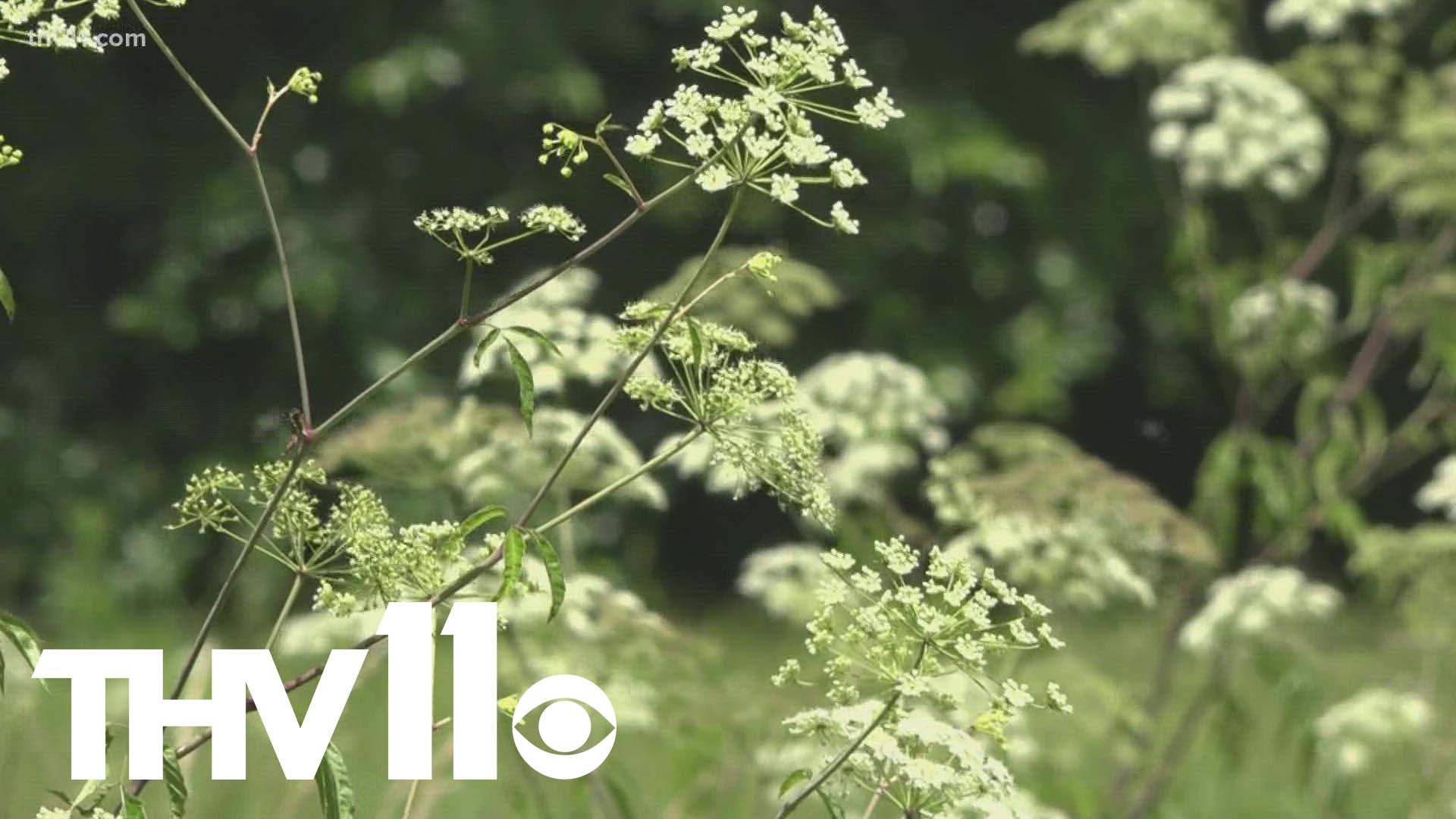NORTH LITTLE ROCK, Ark — If you're going to be outside this summer, you'll want to check where you're stepping-- poison hemlock is spreading across the state.
The name is befitting since the plant can grow up to 10-feet tall and can be deadly to humans and livestock if ingested.
The Arkansas Department of Agriculture said the plant is primarily found in the northern part of the state, but it's starting to spread down to central parts.
Paul Shell is a part of the Plant Industries Division with the department. He said eating even small amounts of the plants can kill livestock.
"There is not a skin reaction in most people. However, everyone needs to avoid touching it because you can still spread it to your eyes, nose, and mouth," said Shell.
As far as what you should keep an eye on, these are the symptoms for Hemlock poisoning which can show up between 30 minutes and an hour.
- trembling
- burning in the digestive tract
- dilated pupils
- muscle pain and weakness
- rapid heart rate
- convulsion
- unconsciousness or coma
Officials said that it's important to remain aware and careful as poison hemlock can often be mistaken for another plant, Queen Anne's Lace.
The key difference between the two comes in the color of the plant.
"Hemlock has kind of purple maroon-ish blotches on the stem," said Shell.
Over at the St. Joseph Center's Community Garden in North Little Rock, manager Rachelle Kelly discussed the dangers of the plant. She said that it can be very dangerous if you touch it, smell it, or even burn it-- there's also currently no antidote for it either.
"You want to have it irradiated, so if you're pulling it from your gardens you want to use gloves. You make sure that you're putting it in a trash bag and disposing of it, you're not actually putting it back in to the soil," said Kelly.
When you look around the garden, you can find a wide variety of beautiful colors and plants on the 63 acres of land at St. Joseph Community Center.
"You feel like you're out of the city. You feel like you're out in the country. I have a plot in that community garden and I've been there for a number of years. There's a lot of nature around so it's just a perfect little oasis," said Ruth Landers, master gardener and naturalist.
Unfortunately, they're experiencing a small patch of poison hemlocks in a ditch away from the livestock and gardens.
"Obviously, this is not something that we really want here, but in Arkansas this is actually water hemlock which is very toxic and poisonous," said Landers.
Landers said they had less poison hemlocks last year, but with more rainy weather pouring into the ditches, it meant more cases of the poisonous plant popping up.
Their plan now an obvious one-- they want to get rid of them.
As for the Department of Agriculture, it's a similar feeling as Shell said poison hemlock is a biennial plant with the lifespan of two years.
"In it's first year it's going to just have a small clump of leaves at the base and then in the second year it will put up a flower stock, and then those flowers will eventually become seeds that will eventually become plants," said Shell.
He suggests getting rid them in the first year with a herbicide.
Experts said if you have plants that are already flowering, the best thing to do is to mow them to prevent those flowers from becoming seeds.

